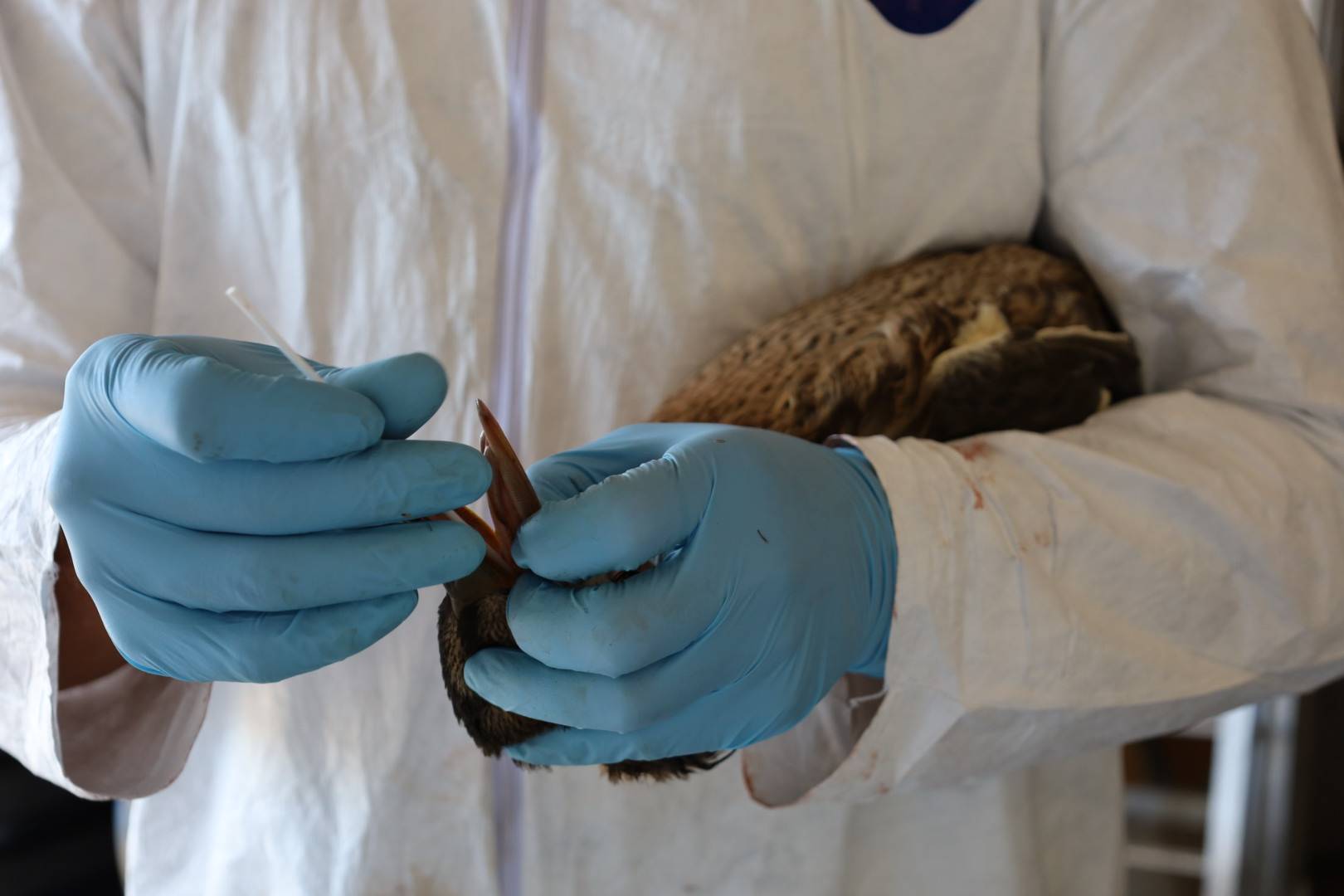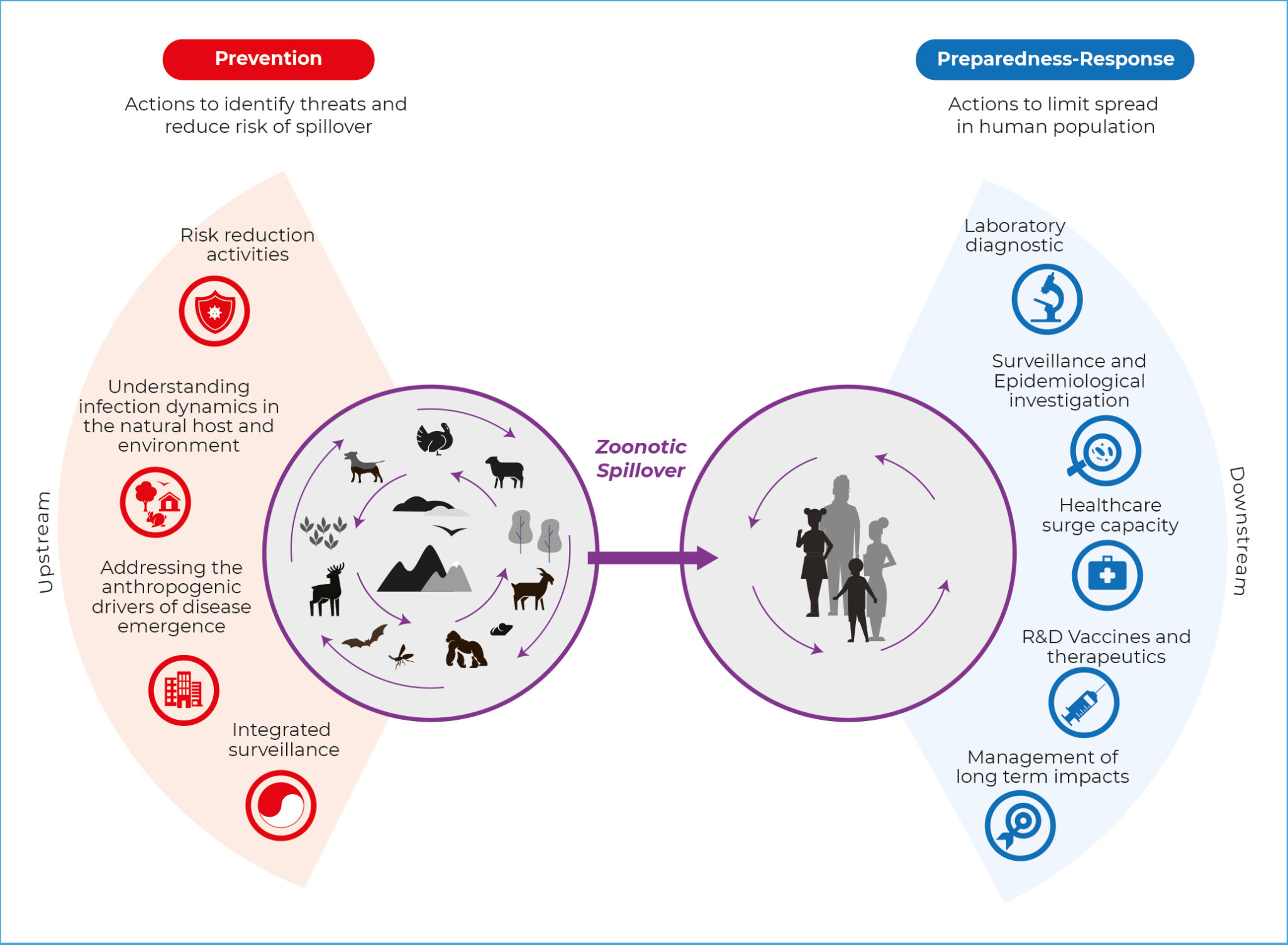Wildlife Management for
Avian Influenza

Role of Tribal Wildlife Management
Tribal wildlife managers play a key role in mitigating and responding to avian influenza (HPAI or bird flu). By monitoring wildlife and tracking the virus, they help detect early infections, reduce cross-species transmission, and protect both wildlife and domestic animals. These efforts support community health, food security, and cultural practices.
Prevention & Rapid Response
Train Staff: Educate wildlife managers, biologists, technicians, and conservation officers on HPAI, safe wildlife handling, PPE use, and biosecurity measures. In the event of an HPAI outbreak, USDA APHIS provides recommendations for emergency response protocols to help manage the situation, minimize virus spread, and protect public health.
Monitor & Report: Track avian influenza cases in wild birds, poultry, mammals, livestock, and humans in your region. Report sick or dead animals to local Tribal, state, or federal agencies. Call USDA-APHIS Wildlife Services at 1-866-487-3297.
Tribal agencies can collaborate with USDA APHIS Wildlife Health or the USGS National Wildlife Health Center (NWHC) on responding to wildlife morbidity/mortality events.
Use Personal Protective Equipment (PPE): Protect personnel and wildlife while preventing the spread of avian influenza by using appropriate PPE.
Strengthen Biosecurity: Protect wild and domestic animals and community health by implementing structural and operational biosecurity measures.
Strengthen Biosecurity

Structural Biosecurity
Limit Wildlife Contact: Prevent direct or indirect contact between wild and domestic animals to reduce disease transmission.
Secure Food & Water Sources: Inspect and protect feed storage, water sources, and animal enclosures to prevent contamination.
Implement Wildlife Deterrents: Use bird spikes, netting, sound devices, and other deterrents to keep wildlife away from high-risk areas.
Operational Biosecurity
Practice Good Hygiene: Wash hands frequently with soap and water or use hand sanitizer containing at least 60% alcohol.
Clean & Disinfect Equipment: Clean and disinfect tools, shoes, vehicles, and facilities with EPA-approved disinfectants (e.g., diluted bleach, Pine-Sol).
Maintain Biosecurity Zones: Keep clean areas (e.g., feed storage) separate from dirty areas (e.g., waste disposal) to reduce contamination risks.
Restrict Access to High-Risk Areas: Limit entry to animal enclosures, feed storage, and quarantine zones.
Properly Dispose of Contaminated Materials: Use incineration, designated composting areas, or sealed bags to safely dispose of carcasses and waste.

Monitoring & Reporting
Monitoring & Surveillance: Avian influenza monitoring and early detection can help stop the spread. Stay updated on AI detections in your region in wild birds, poultry, mammals, and livestock.
Wildlife managers can be trained to collect samples for laboratory testing. NAFWS offers wildlife health trainings at regional and national conferences. Check the event calendar or contact NAFWS for details.
Reporting: Establish a system for responding to and reporting dead or diseased animals. Encourage staff and community members to report cases with key details like location, species, and symptoms to the appropriate Tribal, state, or federal agency.
Data Security: The global impact of avian influenza, and its potential for mutation, underscores the importance of data sharing. Discuss data sharing and security with relevant reporting agencies, including USDA APHIS and the National Animal Health Laboratory Network (NAHLN).
Tips to Prevent HPAI Spread
Effective sanitation and the proper use of personal protective equipment (PPE) is essential for both protecting both people and wildlife and preventing spread of HPAI.
Wash Hands
Practice regular handwashing with soap and water. If unavailable, use hand sanitizer containing at least 60% alcohol.
Separate Equipment
Use designated tools and equipment for specific areas to prevent cross-contamination. Disinfect shared equipment before and after use.
Wear PPE
Use disposable gloves, protective shoe covers or boots, protective clothing, eye protection, and N95 respirators to reduce inhalation of virus particles.
Designate Areas
Clearly separate “clean” areas, such as feed storage and bird handling zones, from “dirty” areas, including waste disposal or contaminated equipment zones, to minimize cross-contamination risks.
Clean & Disinfect
Clean and disinfect surfaces, equipment, and clothing before and after each use with EPA-approved disinfectants (e.g., Pine-Sol, accelerated hydrogen peroxide, or bleach diluted in a 1:32 ratio).
Safe Waste Disposal
Dispose of bedding, manure, and other waste in sealed bags or designated composting areas to minimize environmental contamination.
HPAI PREVENTION:
Steps to Clean & Disinfect
HPAI Prevention & Response:
Responding to Community Concerns
Community Education Goals
Respond to community-specific concerns, such as safety for hunters and cultural practices, and offer risk reduction strategies.
Highlight preventative actions, such as avoiding contact with sick birds, reporting unusual deaths, using PPE, biosecurity, and practicing good hygiene.
Encourage Reporting suspected cases and provide contact information for the appropriate Tribal or state agency or USDA APHIS.
Address Human Health and provide information on health risks, symptoms, when to seek medical advice, and preventative measures.
Correct misinformation, such as fear of contracting HPAI through cooked poultry.
Provide support such as education materials, HPAI testing, PPE, biosecurity materials, and financial assistance. Help connect community members with state or federal services .

Strategies for Community Education
Educate community members and respond to concerns about HPAI, preventative actions, recognizing symptoms, human health risks, and reporting. Strategies for community education can include:
Share information through social media, news bulletins, or during community events. See the CDC Avian Influenza Social Media Toolkit.
Offer information sessions or workshops for those that regularly come into contact with wildlife.
Provide regular updates from trusted sources (i.e., CDC, USDA, and local public health departments) to keep the community informed about the status of the outbreak.
Involve trusted community leaders in spreading awareness and addressing concerns.
Additional Resources
NAFWS Resources
NAFWS provides training and support through the Wildlife Health Initiative to help Tribes manage wildlife health and respond to disease outbreaks. Training sessions at regional and national conferences cover avian influenza testing and biosecurity. Check the Event Calendar or contact NAFWS staff for details.
Government Partners
Many government agencies provide support for HPAI prevention and response, with some offering direct assistance to Tribal Nations.
Animal Health Contacts: List of Animal health contacts including veterinarian, laboratory, and emergency response.
USDA Animal and Plant Health Inspection Service (APHIS): Offers funding, emergency response training, and diagnostic testing through the National Animal Health Laboratory Network. Tribes can also request training and support from the Office of the National Tribal Liaison.
Center for Disease Control and Prevention (CDC): Offers information on HPAI and human health, Provides updates on human HPAI cases, public health strategies, and communications tools.
Additional, resources may be available through the Bureau of Indian Affairs (BIA), U.S. Geological Service (USGS), Fish & Wildlife Service (FWS), Environmental Protection Agency (EPA), and Occupational Safety and Health Administration (OSHA).
Funding Opportunities
Tribes can access funding for disease prevention and response through programs such as:
- NADPRP – Supports Tribal projects on animal disease preparedness.
- NAHLN – Funds disease surveillance and prevention.
- AMR Dashboard – Supports projects on antimicrobial resistance in livestock and poultry.
- Other – Other funding may be available for disease response, biosecurity, and education.